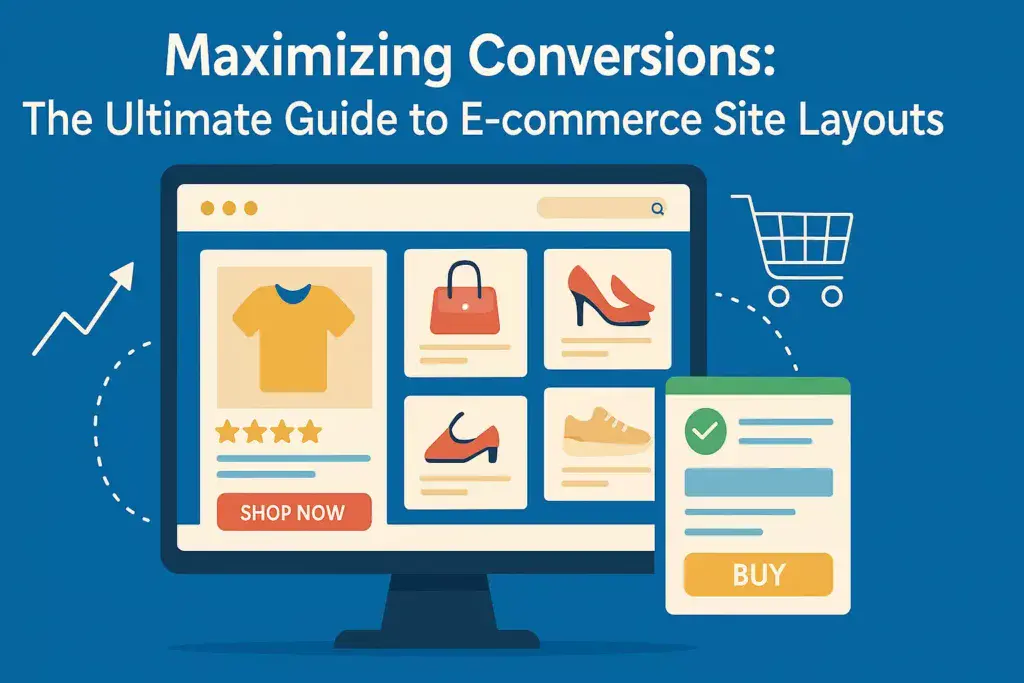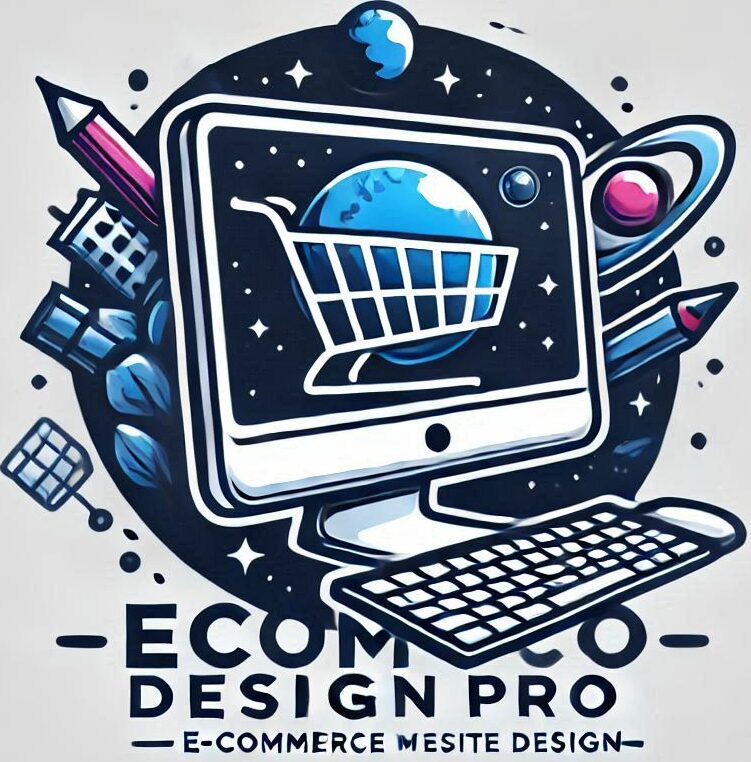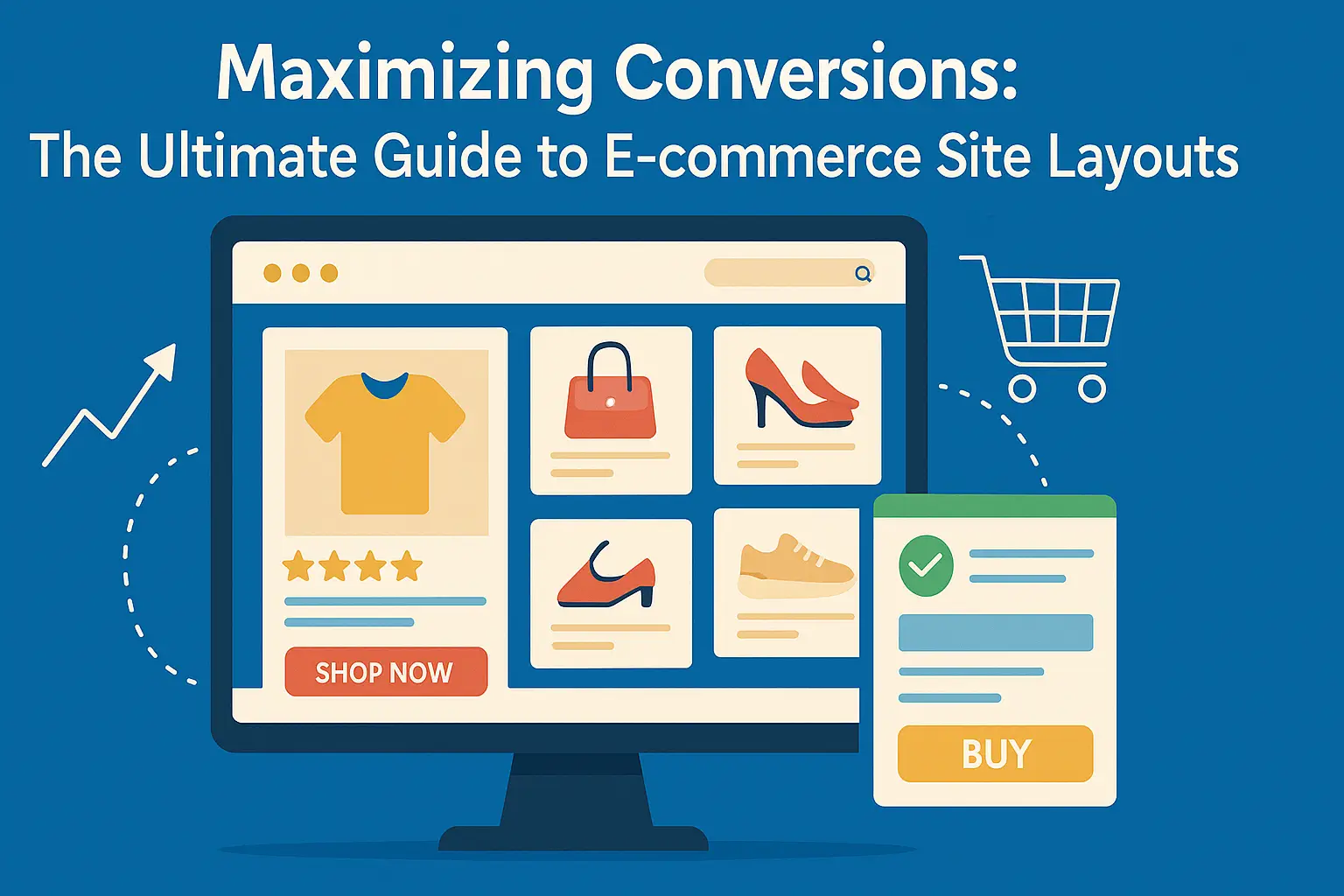
I. Introduction to E-commerce Site Layouts
In the rapidly evolving landscape of online shopping, the significance of an effective e-commerce site layout cannot be overstated. As consumers increasingly turn to digital platforms for their purchasing needs, businesses must ensure their websites are not only visually appealing but also strategically designed to enhance user experience and drive conversions. A well-structured site layout serves as the foundation for facilitating seamless navigation, showcasing products effectively, and ultimately guiding visitors toward making a purchase.
The layout of an e-commerce site can significantly influence a shopper’s journey—from the moment they land on the homepage to the final stages of checkout. A thoughtfully designed layout considers the psychological triggers that encourage buying behavior, ensuring that potential customers remain engaged and motivated to complete their transactions. This article will explore various aspects of e-commerce site layouts that can optimize conversion rates, including user experience (UX) principles, effective product page design, and checkout process optimization.
As we delve into the intricacies of e-commerce site layouts, it is crucial to understand that these designs are not merely aesthetic choices; they are strategic tools that can make or break an online business. By prioritizing user-centric design elements, e-commerce stores can create a compelling environment that fosters trust, encourages exploration, and ultimately drives sales. In the sections that follow, we will examine key components of effective e-commerce layouts and how they can be leveraged to maximize conversion potential.
II. Understanding User Experience (UX)
In the competitive landscape of e-commerce, a well-designed user experience (UX) is paramount to driving conversions and ensuring customer satisfaction. UX encompasses every interaction a user has with an e-commerce site, from the initial landing page to the final checkout process. By prioritizing user experience, businesses can create a seamless journey that not only attracts visitors but also encourages them to convert into paying customers. This section delves into the critical aspects of UX that significantly impact e-commerce site performance.
A. Importance of Navigation
Navigation is the backbone of any effective e-commerce site layout. A well-structured navigation system allows users to find what they are looking for quickly and effortlessly. This includes intuitive menus, clear categorization of products, and an effective search function. When visitors can easily navigate through the site, they are more likely to explore additional products and make purchases. A study by the Nielsen Norman Group found that users prefer straightforward navigation, which enhances their overall experience and reduces frustration. Therefore, investing time in designing a user-friendly navigation system can lead to higher engagement and increased sales.
B. Role of Visual Hierarchy
Visual hierarchy refers to the arrangement of elements on a webpage to guide users’ attention and make important information easily identifiable. By leveraging size, color, and placement, e-commerce sites can create a visual flow that directs users toward key information, such as product features, pricing, and calls to action. For instance, utilizing larger fonts for headings and contrasting colors for buttons can help draw attention to essential elements. This strategic use of visual hierarchy not only enhances the aesthetic appeal of the site but also improves usability, making it easier for users to make informed decisions.
C. Optimizing Load Time
In an age where consumers expect instant gratification, website load time is a critical factor in user experience. Research has shown that even a one-second delay in page loading can lead to a significant drop in conversion rates. Users are more likely to abandon a site that takes too long to load, opting instead for competitors with faster performance. To optimize load time, e-commerce sites should focus on minimizing image sizes, leveraging browser caching, and utilizing content delivery networks (CDNs). By ensuring that pages load quickly, businesses can reduce bounce rates and improve overall user satisfaction, ultimately fostering a more conducive environment for conversions.
In summary, understanding and optimizing user experience is essential for e-commerce success. By focusing on navigation, visual hierarchy, and load time, businesses can create an engaging and efficient online shopping experience that not only meets but exceeds customer expectations. This foundational understanding of UX will pave the way for further enhancements in product page design and checkout process optimization, which are crucial for driving conversions in the competitive e-commerce landscape.
III. Effective Product Page Design
The product page is arguably the most critical component of any e-commerce site, serving as the virtual storefront where customers decide whether to make a purchase. A well-designed product page not only showcases the items effectively but also guides the user toward a conversion-friendly experience. Here are key elements to consider for optimizing product page design:
A. High-Quality Images and Videos
Visuals play a pivotal role in e-commerce, as they are often the first point of contact between the customer and the product. High-quality images that allow users to zoom in and view details can significantly enhance the shopping experience. Additionally, incorporating videos can offer dynamic perspectives that static images cannot provide. For example, videos demonstrating a product’s use or showcasing different angles can help customers envision how the product fits into their lives. Utilizing 360-degree views can also provide a comprehensive understanding of the product, making it feel more tangible and trustworthy.
B. Clear Product Descriptions
While images capture attention, clear and concise product descriptions seal the deal. Descriptions should not just list features but also highlight benefits and practical uses of the product. Employing a conversational tone can engage users more effectively, making them feel knowledgeable about their potential purchase. Bullet points can be useful for summarizing key features at a glance, while detailed descriptions can delve deeper into the product’s attributes. Ultimately, the goal is to inform and persuade, ensuring that customers feel confident in their buying decisions.
C. Strategic Call-to-Action Buttons
The placement and design of Call-to-Action (CTA) buttons are essential in guiding users toward making a purchase. A well-structured CTA should be noticeable and compelling, using action-oriented language that encourages clicks, such as “Add to Cart” or “Buy Now.” The color and size of the button should contrast with the surrounding elements, ensuring it stands out on the page. Additionally, consider placing CTAs in multiple locations—such as above the fold, after product descriptions, and even alongside related products—to capture users at various stages of their decision-making process.
By focusing on high-quality visuals, clear descriptions, and strategically placed CTAs, e-commerce businesses can create product pages that not only attract visitors but also convert them into loyal customers. In the increasingly competitive online marketplace, these design elements are critical for driving sales and enhancing overall user satisfaction.
IV. Checkout Process Optimization
The checkout process is a critical phase in the e-commerce journey, directly influencing conversion rates and overall customer satisfaction. A smooth and efficient checkout experience can significantly reduce cart abandonment rates and enhance the likelihood of repeat purchases. Here are key strategies to optimize your checkout process.
A. Simplifying Checkout Steps
A streamlined checkout process is vital for minimizing friction and ensuring customers can complete their purchases without unnecessary hurdles. Consider implementing a one-page checkout that consolidates all necessary fields into a single, easily navigable interface. This eliminates the need for customers to click through multiple pages, reducing drop-off rates.
Additionally, minimize the number of required fields to the essentials. Only ask for information that is absolutely necessary, such as shipping address and payment details. This approach not only speeds up the process but also respects the customer’s time, fostering a more positive shopping experience.
B. Offering Multiple Payment Options
In today’s diverse market, customers expect flexibility when it comes to payment methods. By providing a variety of payment options—such as credit and debit cards, digital wallets like PayPal and Apple Pay, and even buy-now-pay-later services—you can cater to a wider audience and accommodate different preferences.
Ensure that the checkout page clearly displays all available payment options upfront, as this transparency can encourage customers to proceed with their purchases. Additionally, integrating popular and trusted payment methods can enhance consumer confidence and reduce the likelihood of cart abandonment.
C. Providing Trust Signals
Establishing trust during the checkout process is crucial for alleviating any potential concerns customers may have about security and reliability. Incorporating trust signals—such as SSL certificates, recognizable security logos, and clear return policies—can significantly enhance consumer confidence.
Consider including testimonials or ratings from previous customers, as well as displaying guarantees, such as money-back or satisfaction guarantees. These elements not only reassure customers about the safety of their transactions but also reinforce your brand’s credibility and commitment to customer satisfaction.
By focusing on these key areas of checkout process optimization, e-commerce sites can create a frictionless and secure purchasing experience that leads to higher conversion rates and a loyal customer base. Streamlining the process, offering diverse payment options, and providing trust signals are all essential components in turning potential sales into completed transactions.
V. Conclusion and Future Trends
In conclusion, the layout of an e-commerce site plays a pivotal role in determining its success. A well-structured site not only enhances user experience but also significantly boosts conversion rates. By focusing on key elements such as intuitive navigation, visual hierarchy, and optimized product pages, businesses can create an engaging shopping experience that encourages customers to complete their purchases. Moreover, simplifying the checkout process and incorporating trust signals can alleviate customer hesitations, further driving conversions.
Looking ahead, several trends are poised to shape the future of e-commerce site layouts. First, the integration of artificial intelligence and machine learning will enable more personalized shopping experiences, tailoring product recommendations and layouts to individual user preferences. Additionally, as mobile commerce continues to rise, responsive design will become increasingly crucial, ensuring seamless experiences across all devices.
Another trend is the growing importance of sustainability and ethical practices in e-commerce. As consumers become more eco-conscious, layouts that reflect a brand’s commitment to sustainability—through transparent sourcing information or eco-friendly product highlights—will resonate more with shoppers.
Finally, the rise of immersive technologies such as augmented reality (AR) and virtual reality (VR) is set to revolutionize how products are displayed and interacted with online. These technologies can provide customers with a more realistic view of products, enhancing their confidence in purchasing decisions.
In summary, as the e-commerce landscape evolves, businesses must stay ahead of the curve by adopting innovative site layouts that prioritize user experience and embrace emerging trends. This proactive approach will not only optimize conversions but also build lasting relationships with customers in an increasingly competitive digital marketplace.


